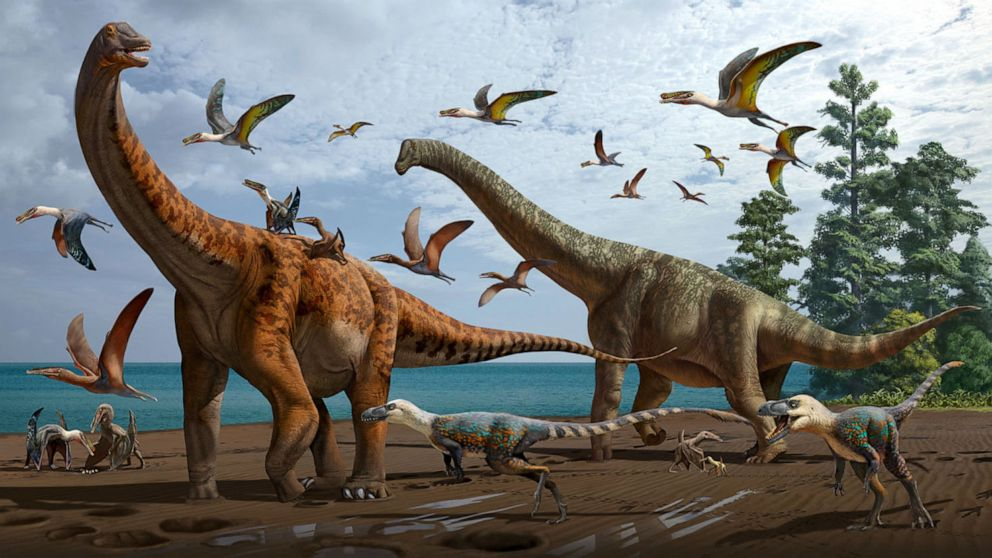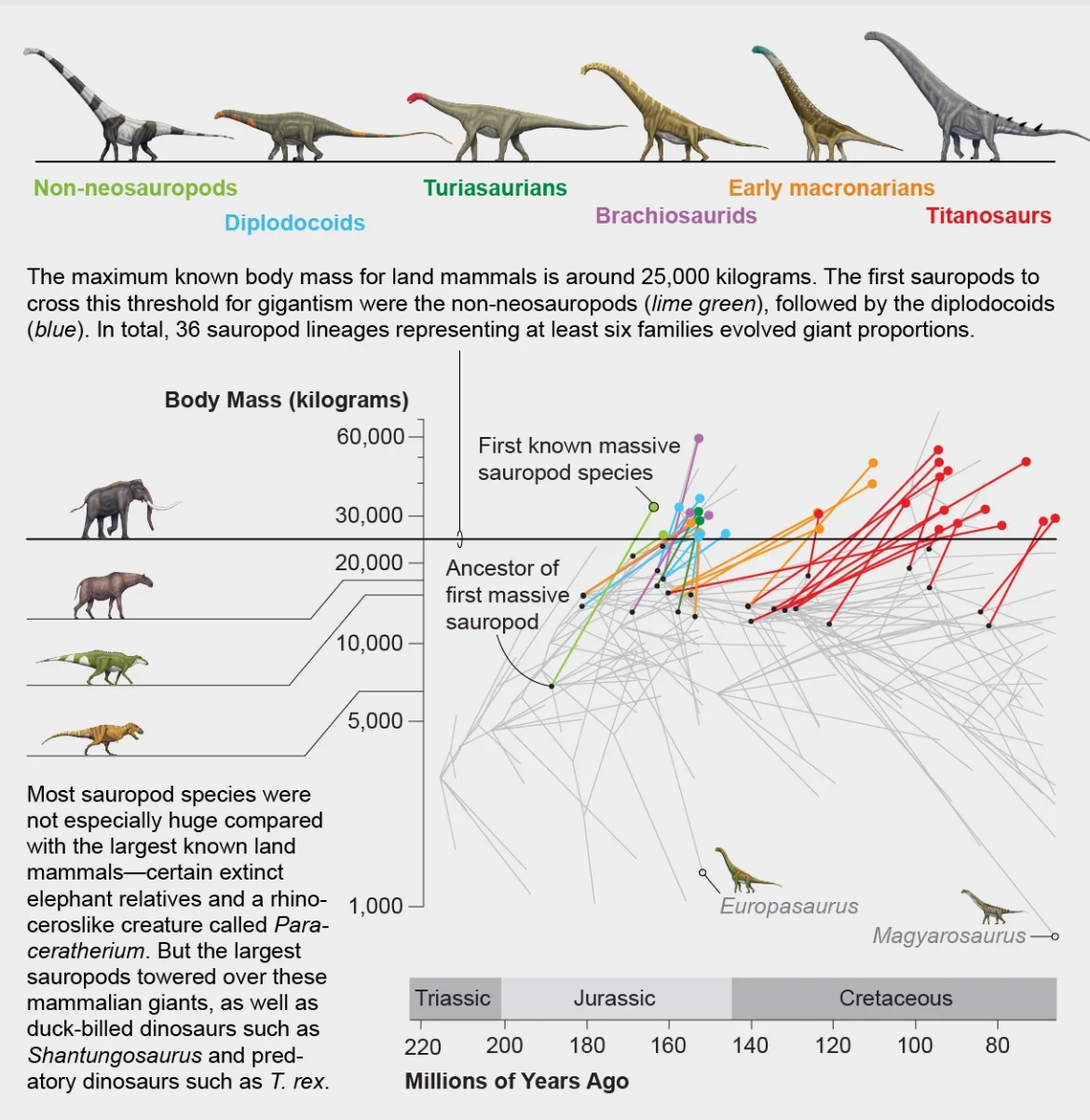Friday, September 15, 2023
Hello again and welcome back to Wolmania. Nothing about outer space this week, but I did see that For All Mankind is coming back soon. Can't wait to see the old age makeup again.
Item 1: a link

You've probably heard the one about how evolution just keeps making crabs. Michael D. D'emic writes in Scientific American about how evolution made sauropods once - just once - but kept making them outrageously huge:
Evolution is rampant with examples of convergence, in which the same feature evolves more than once independently in different groups of organisms. A classic example of convergence is powered flight—flapping wings evolved in birds, bats, pterosaurs and insects, but the particular bones or other structures making up the wings differ among the groups, attesting to their independent evolutionary origins. Convergence in evolution is very common even when it comes to complicated features: warm-bloodedness, eyes that can move and focus, bipedal locomotion, the loss of limbs, the use of tools, and live birth all evolved multiple times in different animal groups. Convergence is widespread in the plant kingdom as well: carnivorous plants evolved at least a dozen times, roots evolved more than once, and even arborescence—plants taking the form of trees—evolved more than once. With convergence so common in nature, sauropods' uniqueness in size is special in itself. No other land animal has approached even a third of the largest sauropods' weight. What makes sauropods stand out from the crowd, both literally and figuratively?
Thanks to a wealth of sauropod discoveries over the past few decades, paleontologists are beginning to piece together the answer to this question. Analyses of this burgeoning fossil record reveal where and when these dinosaurs became giants, and the factors that allowed them to evolve extreme sizes again and again over the course of their nearly 150-million-year-long reign. They also suggest that, as mind-bogglingly huge as the largest-known sauropods were, even bigger ones remain to be discovered.

Read on for much more.
Item 2: a list
The Three Musketeers, ranked:
- Athos
- D’Artagnan
- Porthos
- Aramis
Item 3: a media recommendation
Item 4: word of the week
Alacrity
"I'll give you a thousand dollars if you can define the word of the week", he said smugly.
"I accept", she blurted with alacrity, before the pompous dork could take it back. The money was as good as spent.
Item 5: a photograph

See ya!
Thanks for reading, folks. Hope this was as fun to read as it was to write. Bit of a low bar there.
See you next week.
Member discussion